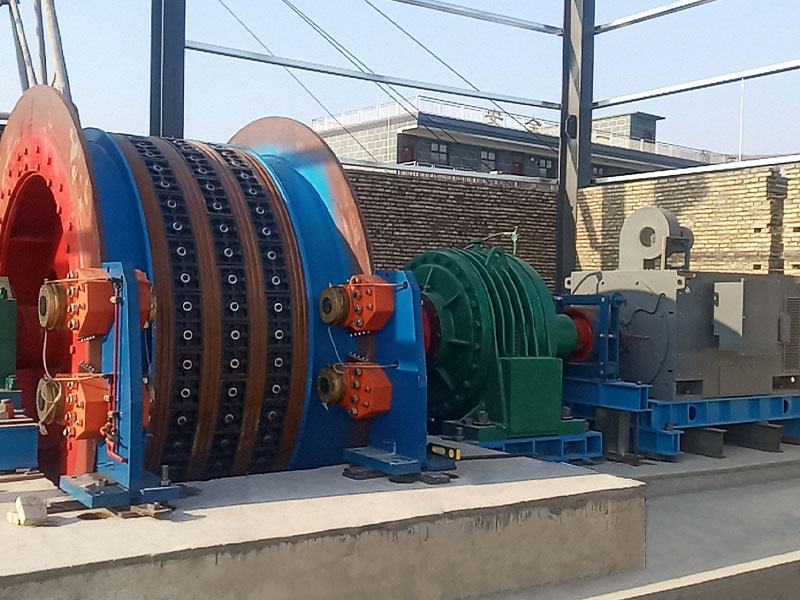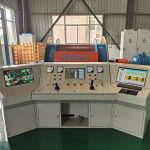The multi-rope friction hoist consists of a main shaft device, a brake device, a reducer, a depth indicator, a groove device and a guide wheel. Its brake device, vertical platform, etc. are the same as those of the water-type single-drum hoist. The remaining components are introduced as follows:


1. Main shaft device:
The hoist spindle bounding is made up of leading wheel 7, main shaft 3, two rolling device bearing 4 and clamping device.
The main pulley adopts a common low-alloy steel rice (16mn) welded structure with a steel plate thickness of 20-30 mm. The main pulley of a large hoist is equipped with a support ring to increase its rigidity, while the small hoist does not have a support ring to make the structure simple and easy to manufacture. The brake disc is welded on the side of the main pulley. Depending on the number of disc brake pairs used, one or two brake discs can be welded.
The friction pad is pressed against the main wheel surface with a fixed block, and no movement in the direction is allowed. In order to place the hoisting steel long rope pad, there is a rope groove on the car. The spacing between the linings (i.e. the spacing of the wire ropes) is generally about ten times the diameter of the wire rope, and is related to the structural dimensions of the suspension device between the wire rope and the lifting container.
In order to facilitate and ensure the replacement of the lifting wire rope, friction lining and repair of the disc brake, a locking device for fixing the main wheel is installed on one side of the bearing beam
The main wheel is firmly installed on the main shaft, and the main shaft is supported on the rolling bearing. The advantages of rolling bearings are high efficiency, simple maintenance and long service life compared to sliding bearings.
2. Reducer
The reducer adopts a spring foundation and a hydraulic damper. The load of the reducer acts on the ground foundation through the spring, which can reduce the impact of dynamic loads on the transmission gears, foundations and towers during the start-up, deceleration and safety braking of the hoist.



